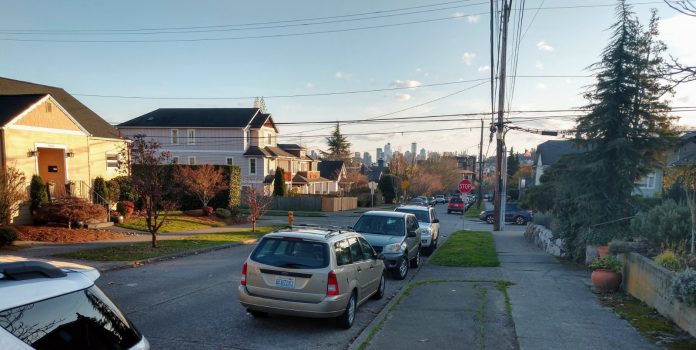
King County released final 2019 election results data on Monday and precinct maps show people in multifamily areas and single-family zones have very different politics. Progressive candidates cleaned up in Seattle’s Urban Villages and renter-heavy areas. Conservative votes mostly tracked Lake Washington and Puget Sound, representing million-dollar view homes. Between the camps, visions for the future of Seattle are not the same.
And unfortunately for single-family preservationists, they’re not making more land nor more detached single-family homes, as much as Seattle Times columnist Brier Dudley can pine for them–at least not at the rate we’re adding apartments and condominiums. This presents a problem for the Milquetoast Moderates (or “Pragmatic Progressives” if you prefer) going forward. Apartments keep going up, meaning more voters who generally lean progressive and are not attached to the project of freezing single-family neighborhoods in amber–the pet project of the Seattle Times Editorial Board, which had the exact opposite endorsements for Seattle City Council as we did.
Alex Pedersen is their lone voice on the Seattle City Council. And he won by less than 1,400 votes, with at least that many apartments likely to open in District 4 within a year–take a look around the U District, Roosevelt, or Wallingford if you doubt that. The math isn’t favorable to the moderates and conservatives.
In more ways than one, zoning is destiny. And even though our zoning still reserves the majority of Seattle for single-family homes only, the inclusionary multifamily zoning we do have is enough to tip the scales–even in a off-year election where turnout trails Presidential years and Midterms, especially in apartment-heavy areas. Turnout maps reveal that wealthy single-family areas had the highest turnout. However, given how decisively they went for progressives, tenants still carried the day even with lower turnout. A side by side of a zoning map and win margins show that urban villages and progressive strongholds were one and the same.
Moving City Elections to Even Years to Boost Turnout
And speaking of off-year elections, Sen. Joe Nguyen (D-West Seattle) announced legislation to address the problem–likely switching city council races to even years–which he says will be introduced this coming session. The move is intended to encourage high turnout elections. Hopefully, that bill will find support in the Democratic-controlled state legislature.
Redlining’s Impact Still Felt
Add in historic redlining maps–commissioned by the federal government and enforced by banks and real estate agents–and you will see that time is a flat circle. The wealthy areas marked green and blue for “desirable” still largely vote against sharing the neighborhoods they live in with more people, particularly of different socioeconomic backgrounds. We are still living that legacy. The formerly redlined areas marked in red and yellow for “hazardous” and “declining” were the base of support of progressive candidates. Progressive candidates and voters tend to support opening up more of Seattle to apartments and missing middle housing.
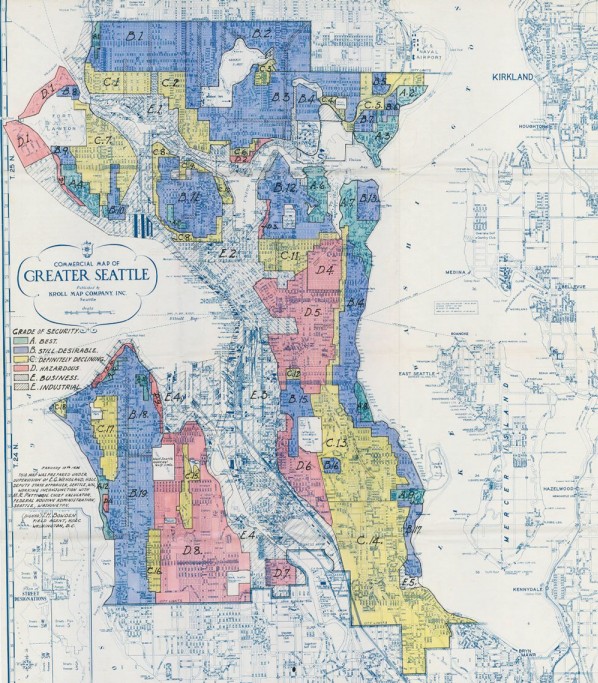
Councilmember Kshama Sawant’s results–in which she dramatically came from behind propelled by formerly redlined neighborhoods such as Capitol Hill, First Hill, the Central District, Judkins Park, and the International District–highlighted the lingering pull of redlining maps most starkly. The richest areas of Seattle benefited from federal policy that funneled federally-insured loans to them while denying them to people of color. That White privilege and generational wealth is still at play today.
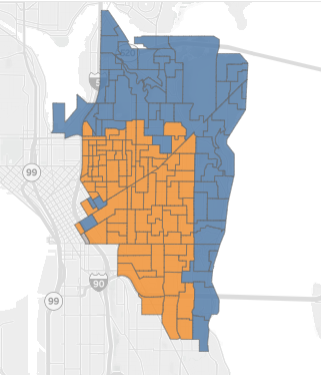
Sawant did best in formerly redlined areas. (Viz by Jason Weill) 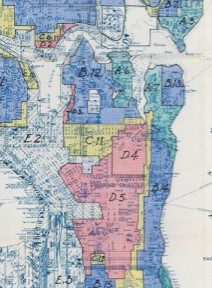
This 1936 map shows much of D3 was redlined outside of lakefront areas and the north. (Knoll Map Company)
Socialism Gaining Traction
The other thing we learned is that socialism is far less scary and fringe as it used to be. Mayor Jenny Durkan attempted to brand Tammy Morales as a socialist in a fundraising email, but the shameless redbaiting backfired. Morales ended up snagging more than 60% of the vote, trouncing Mark Solomon, who was backed by Durkan and the Seattle Metropolitan Chamber of Commerce.
Though a member of the Democratic Socialist of America, Morales identifies as a Democrat rather than a socialist. That appears to allow her to straddle both camps and dominate. Scott, meanwhile, fully embraced the socialist label, but he came up just short. His close loss upended a lot of conventional wisdom that Sawant was an aberration and nobody else stood a chance of winning as a socialist. That (and Sawant winning again) could mean that the socialist floodgates are open now, particularly in high-turnout even-year elections.
Without further ado, here are the precinct maps by district.
D1 – Herbold (blue) Takes 56%
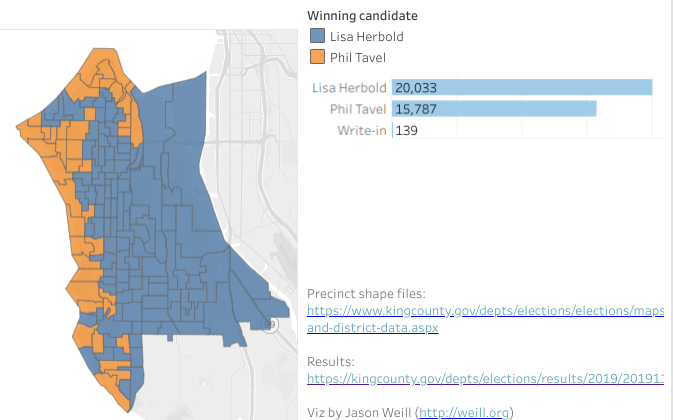
D2 – Morales (orange) Takes 60%
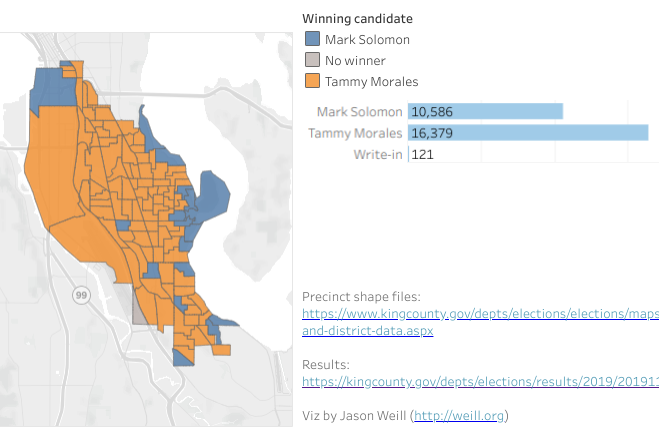
D3 – Sawant (orange) Boomerangs to 52%
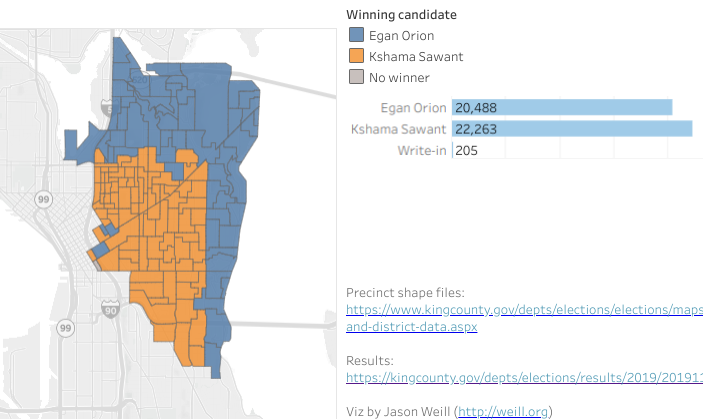
D4 – Pedersen (blue) Clings to 52%
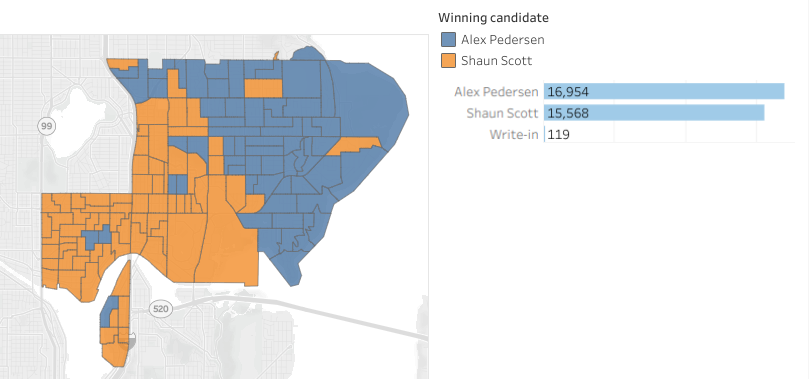
D5 – Juarez (orange) Blows Past 60%

D6 – Strauss (blue) Takes the Inland Route to 56%
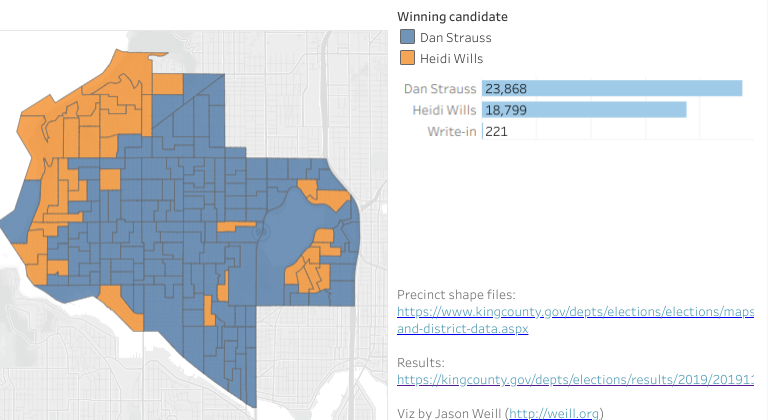
D7 – Lewis Rides High on the Lowlands with 53%
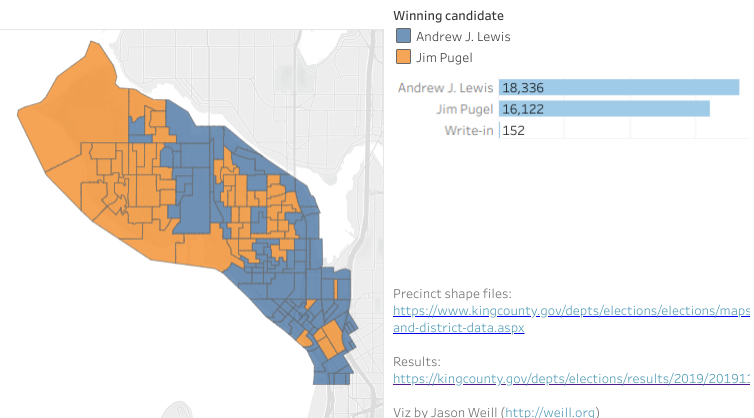
Doug Trumm is publisher of The Urbanist. An Urbanist writer since 2015, he dreams of pedestrian streets, bus lanes, and a mass-timber building spree to end our housing crisis. He graduated from the Evans School of Public Policy and Governance at the University of Washington in 2019. He lives in Seattle's Fremont neighborhood and loves to explore the city by foot and by bike.

